The date was March 26, 1924. The latest model REO sedan was packed and ready for the road. Travelers checks and gasoline tickets had been purchased and the local newspaper notified. Estella McCully Gilbert, widow of A.N. Gilbert, was off on a transcontinental adventure with her daughter Agnes Schucking. The pair had planned a scenic road trip across the United States; the second trip for Mrs. Gilbert age 74, whose family traveled west by ox and wagon in 1852. Only 3 years old at the time, she nonetheless had vivid memories, particularly of the hardships experienced on the trail.
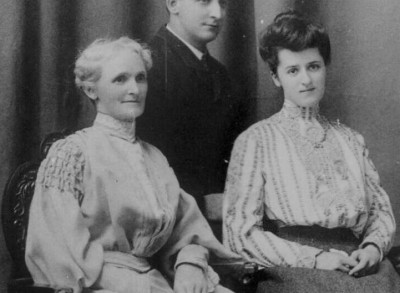
Mother and daughter Estella (McCully) Gilbert and daughter Agnes (Gilbert) Schucking circa 1920s. WHC 2004.010.0256
The mother-daughter duo would travel via the southern route marking the halfway point of their trip in New York City with a visit to Mrs. Schucking’s sister-in-law. Prior to the interstate highway system roads could be rough and often unmarked outside of major cities. Speed was limited by a car’s performance ability and terrain; tire punctures and blowouts frequent. Only seldom, Agnes wrote in her diary, did they speed up to as high as fifty miles an hour and that was on the long roads through the deserts of the southwest. The pair made no attempt to follow a regular schedule, often spending nights sleeping in their car after driving to some out of the way place off the highway where as Agnes put it, “more intimate knowledge of the country and the inhabitants could be obtained.” Thankfully the car easily converted into sleeping quarters by dropping the back of the front seat and unfolding a mattress. At the end of most days, Agnes would faithfully record the daily events in her diary. The women traveled without escort, Agnes doing all of the driving.
Their first adventure came at the California state line where border inspectors opened every piece of luggage despite the women’s protests. In an effort to curb an outbreak of hoof and mouth disease in the southwest, many states had set up quarantine inspection points. Agnes later described to a New York Times reporter the site of “vast congregations of travelers held up by the officials and forced to give up food and live animals, and babies deprived of their bottled milk.” At each station were piles of abandoned food. The two women encountered quarantine points in each of the southwestern states they passed through.
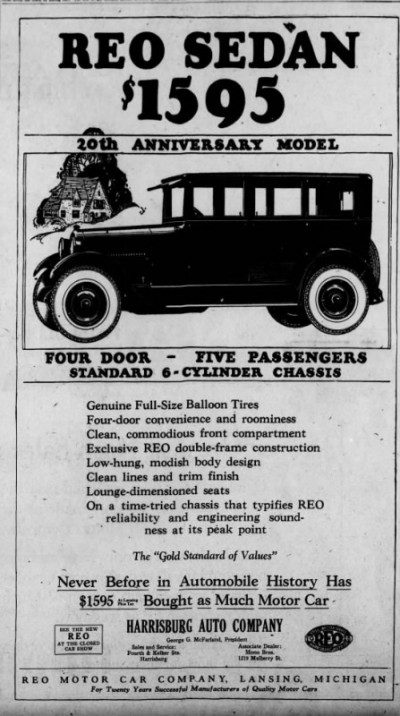
1924 newspaper ad for REO sedan
From California they cut east through Nevada. Then it was on to Santa Fe and Albuquerque, New Mexico with side trips to Indian reservations. Arizona was next with a trip to the Grand Canyon and then on to Texas where they found the countryside “abloom in a veritable carpet of flowers, the short-stemmed variety and brilliant colors”, Agnes noted. It was here that Agnes mended a leaking feed pipe with tape. Then on to New Orleans and Mobile Alabama. In the gulf port the women’s Salem license plate brought joy to a home-sick Oregonian when he spotted it parked at a curb. Agnes does not give his name in her account but shares the story that he “flung open the (car) door and wrung both her hands explaining that he once lived in Salem and that she was the first person from that place he had seen since he left home.” In his effusive affection he also proposed marriage to Agnes, in the event her husband was not living. She protested that her husband was very much alive. But the admirer countered, “He may be dead before you reach home.” And with that rather unsettling comment he waved them off to continue their trip.
In Tallahassee, Florida a local doctor volunteered to change a flat tire for the women. He spied the Salem license plate and asked if they were acquainted with a Dr. Carlton Smith of Salem. Mrs. Schucking and Mrs. Gilbert replied that they knew him very well indeed. Such a small world.
The mother-daughter pair arrived in New York City six weeks and 8,000 miles later. To their surprise when their car reached the home of Mrs. Schucking’s sister-in-law they were greeted by scores of reporters and photographers. As the duo had traveled cross-country word had spread with the unusual story of the 74-year-old pioneer, Mrs. Gilbert making the return trip across the United States, this time by automobile.
After a few days spent visiting family and having their car inspected and serviced they continued their journey. The return trip took them along a northern route through Rochester and Buffalo, New York then briefly across the border to Canada. On to Lansing, Michigan for a visit to the REO Motor Car Company for a factory tour and publicity photos. Then a side trip to the state of Iowa for a visit to Mrs. Gilbert’s birthplace, New London where they found to their sadness that only a foundation and cellar remained to mark the spot of the log cabin of her birth. For the rest of their journey home they retraced the immigrant trail taken by the McCully family in 1852. The mother-daughter road trip ended with a total of 16,000 miles logged, in mid-July when they arrived home safely to Salem.
Thanks to Agnes’ faithful habit of journal-keeping, letter-writing, and cross-country newspaper coverage we can experience vicariously their 1924 mother-daughter road trip and marvel at the differences between modern travel, the women’s experience in their REO sedan, and Mrs. Gilbert’s original trip by ox and wagon.
This article was written by Kaylyn Mabey for the Statesman Journal where it was printed 20 January 2019. It is reproduced here with sources for reference purposes.
Sources:
- Capital Journal, 26 Mar 1924, p. 5, “Matrons Leave For Motor Trip”
- Palladium-Item (Richmond, Indiana), 31 May 1924, “Pioneer Woman Retraces Steps Across Continent”
- Capital Journal, 31 May 1924, p. 9, “Mrs. Gilbert Reaches Gotham in Automobile”
- Capital Journal, 20 Jun 1924, p. 3, “Two Salem Women On Return Trip”
- Capital Journal, 24 July 1924, p. 5, “Tour of Continent By Motor”



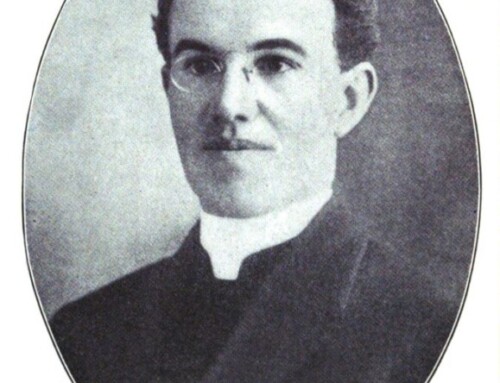
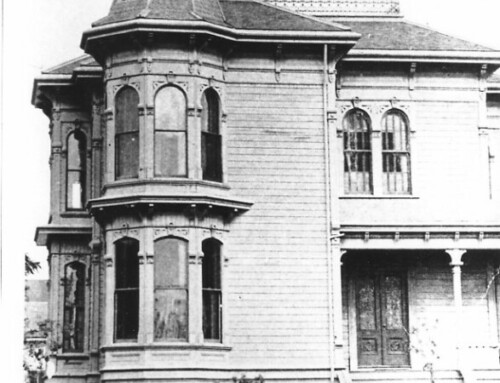
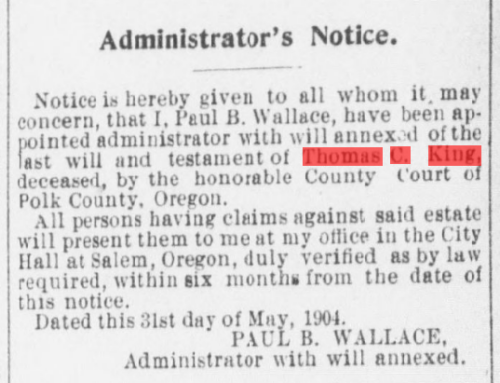

Is there a bio or further journal writings of Estella Gilbert’s and Agnes Schucking’s journies crisscrossing the USA? I read the Statesman Journal article but wanted to learn more
Thank you,
Sheila Zinn
We wish. To date all we’ve been able to locate have been newspaper accounts of this particular trip.